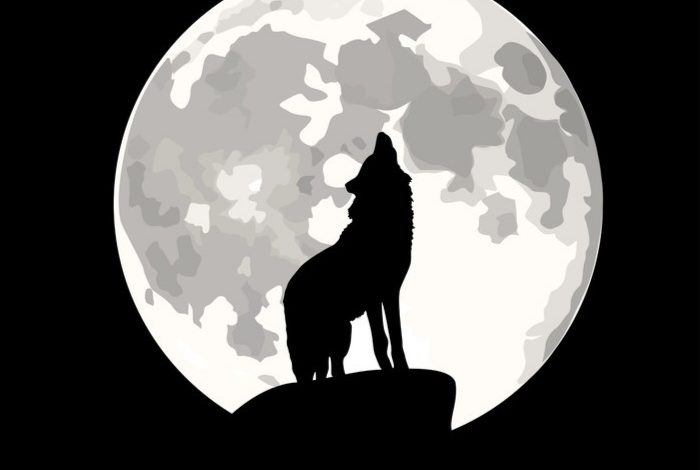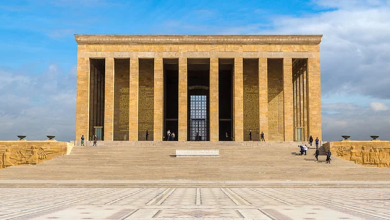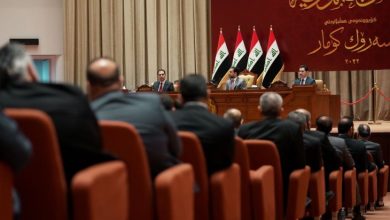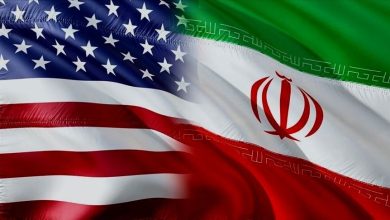Political Myths And Saga in Turkey

Throughout years, myths are one of the most significant stories which are told to communities to be able to encourage their belief and make them dedicate themselves to their community. Myths generally are born in unknown time and spread to people over time by expanding in order to explain genesis of World, existence of people, and other living beings. In other words, Myths are stories which have been created by people to understand and comment themselves, nature, incidents of nature, World and element of cosmogony. In previous times, they had been accepted as real and holy. Generally, myths had chosen gods, heroisms, supernatural creatures as topic. In a lot of myths, subject is establishing a country or state and supernatural nature incidents which can not be explained. They all are basic descriptions of myths. Myths can be observed under 4 different titles as types such as historical myths, political myths, religious myths, and national myths. One of the most important one among them is political myths. These terms is explained by book Political Myths written by Henry Tudor. According to book, Henry said that myths are believed to be true even if they may be false, and they are devices with dramatic constructions used “in order to come to grips with reality”. Political myths simply deal with political topics and always use a group of people as the hero. In 2001, protagonist[1] Christopher G. Flood described a working definition of a political myth as “an ideologically marked narrative which purports to give a true account of a set of past, present, or predicted political events and which is accepted as valid in its essentials by a social group”[2]. The general run of countries has political myths. One of them is Turkey. They are myths that Turks believe that they are real. Which are Kızıl Elma (Red Apple), Turanism, Ergenekon and Göç[3]. They are the political myths which emphasized the superiority of Turks.
Red Apple is one of the most important political myth in Turk history. The Red Apple is an expression in Turkish mythology for the Turks, and especially for the Oghuz Turks, which symbolizes dreams or ulcers that are distant as they are considered but whose attractiveness increases. Sometimes it expresses a dream about establishing ideal of state, the ideal of world domination, and sometimes the ideal of Turkish unity. As a feature of Turkish state tradition, it is the idea that the existing Turkish state will rule under the rule of other states and nations in the world. Sometimes, Red Apple is a destination which is chosen to be occupied. Red Apple image was firstborn among the Central Asian Turks; In the Ergenekon Saga, it is accepted that it symbolizes the ideal of going out from Ergenakon and taking back the lost old country. This idea had become widespread among janizaries who were Turk warriors. The cities where Turk used to want to occupy were seen as red apple. The conquest of Belgrade in 1521, the Battle of Moach in 1526 and the siege of Vienna in 1529 have always referred to the fact that Suleiman the Magnificent took the red apple to his hands. [4] Here, Red Apple Belgrade, Moach and Vieanna where were chosen for occupying but Suleiman could not obtain Vienna. So, it can be said that they could not reach Red Apple. Red Apple has been always in Turk History. After a long time, that had come out in Balkan and Trablusgarp War. In those times, Read Apple means that Ziya Gökalp, who is Turkish author, said that this time, Red Apple is used synonymously with the Turan country, where all Turks came together and longed for centuries instead of the collapsing and disintegrating Ottoman Empire. [4] On this side, Red Apple shows us a similarity with Turanism.
Turanism is the most significant political myths for Turks and Turks World as well. Turanism is the political view that advocates the unity of all Ural-Altai tribes. It first appeared as a gathering of the Tungus, Mongols, and Turks together with the Hungarians, Finns, Estonians, and Finnish-Ugor tribes in Russia. On the other hand, Turanism is a myth that aims to unite the Turkish tribes in a state or unity, summarized as “to be one, to be free”. It is a myth that aims to establish and maintain the World order with the responsibility of being powerful and governing which is the root of Turkish World. In Turk’s history, the first Turk state was Huns which used to reach success on Turanism. Before the Huns, there were Turkish masses who lived in the steppes of Asia, and who were the elements of power. However, Mete Han was able to direct the history of the region and speak about himself by succeeding in gathering these independent masses who spoke the same language and had the same social and cultural texture under his banner. Certainly, this ideal of Mete Han is an example of the ideal of Turanism. This myth had reached success in the past. If we try to observe the present, everything is like what was happening in the past. More than one Turk states have been existing in different regions and some of them is next border neighbour with each other as an independent. Kazakhstan, Turkmenistan, Uzbekistan, and Kyrgyzstan have become independent states where have border with each other. In the West, Turkey and Azerbaijan are countries which almost have a border with each other. Especially in Turkey, almost all citizens have this idea. They want to establish a common Turk unity which all Turks should support each other. Except for Turkey, other countries had depended on Russia until 1970. So, it can be said that they are under pressure which can influence this myth. Because of these reasons, it seems quite difficult to be gathered in Turk states.
Ergenekon is the best-known political myth in Turkey. In the past, Turks were a really powerful community rather than non-Turk. So, they decided to attack to Turk. Then the Turks gathered their tents and herds together; they dug around and waited. When the enemy came, the shooting started. They fought for ten days. As a result, the Turks prevailed. So, enemies decided to renege against Turk in order to beat them and they succeed. The enemy came to their tent to kill the Turks. They ransacked their tents and possessions in such a way that no single tent was left. They killed off all of the adults and capture minors. Only two of them left and decided to escape from there. They had come back Turk home and found camel horses and sheep. They had found an area where was surrounded by mountains and there was no other path except that way which they had come there. In the area where the Turks arrived, there were rivers, springs, various plants, nuts, prey. When they saw such a place, they praised the great God. They ate the flesh of their animals in winter and drank their milk in summer. They wore skin. They called this country ‘Ergenekon.’ Over time, those two families had possession of children and those children got children as well. Their populations were increasing fast. After 400 years. They and their herd so increased that they could not fit into Ergenekon. By Decision of Council, they decided to leave from there by finding a path within mountains but they could not find it. After this movement, an ironmonger said that there was iron mine in the mountains. So, they should melt iron. With the help of God, the iron mountain became hot, melted and flowed. It was a way to get loaded camel. Turks did this and it succeed. A wolf comes out at the end of the way and stood in front of Turks. Everyone understood that wolf would show them the way. With leadership of wolf, they had left from Ergenekon. Turks have never forgotten those days when they left and declared that day as a holy day in order to celebrate every year. From that day to today, this holy day has been being celebrated[5](TURKFOSTER).
The Last political myth is Göç. In the Uighur country, there is a hill called Kumlancu where Tugla and Selenge rivers meet. They called him Huling Mountain. On Hulin Mountain, two trees were very close to each other. One as a beech tree. One night, the people living among the beech sat this light and shuddered. It was a sacred light, and as long as the beech tree remained on the beech tree, it grew bigger. From there many beautiful folk songs began to come. At night, the tree was left in all the surrounding lights beyond thirty steps. One day, the trunk of the tree was cut open. Through five small tents, five small chambers occurred in the case. There was a child in each chamber. The children had a pacifier hanging above their mouths, and they showed great respect to them. People used to know that they had been sent by god. So, they were holy. By these thoughts, they decided to appoint one of them as a leader of them. The chosen one was Bugu Han. After a while, another person had become leader and he got a child whose name was Gali Tekin. This man wanted to get married to Kiu-Lien who was a Chinese prince. China would want to decrease Turk’s power and destroy them. It was known that there was a huge rock which was called Kutlu. This rock was so important for Turks and also it was holy. Chinese offered to take this rock from Turks in order to give them Prince Kiu-Lien. New leader did not care that rock and gave them this holy rock. After this, all disaster had come nonstop. Leader had dead but this did not stop disaster. the locals did not see a relaxed and peaceful time. The rivers dried up one after another. The water of the lakes was steam and flew. The land was split and the crops did not green. After these days, one of Bugu Han’s grandchild had become a leader. After this development, all people, animals, non-living things started to say that they wanted to immigrate. The Uighurs called it a divine command. They were prepared and they were on their way. They left their homes and migrated to an unknown region. Finally, they came to a place and stopped, there was no sound. The Uighurs stood in this place where the sounds were cut off and inaudible. They had been living there for a while. [6]
In the summarize, Myth is generally a story about holiness or religious discourse which explains how World and people have reached their current form. Myth, word comes from “muthos/mithos” words which mean speech or statement, and generally, it is known as story which is told by oral. There is no humiliating or derogatory expression in the term mitos. The modern use of the word is seen as a negative thing belong. On the other hand, myth; perception, shaping, symbolizing the World in the paradigm of values, in short, the generalized model of life and event. They can be analyzed under 4 important titles such as historical, religious, national, and political myths. Political myths is one of the remarkable one. According to Tudor, what recasts myth as political in nature is its subject matter[7], that being politics. In order for a political narrative as myth, the narrative of events must be cast in a dramatic form and it must serve a practical argument. One of those countries is Turkey which has political myths. They have played so important role in Turk History. Some of them are engraved in people. Which are Kızıl Elma (Red Apple), Turanism, Ergenekon, and Göç. It can be said that in these Myths, generally supremacy of Turks has been emphasized.
Eray ÖZTÜRK



